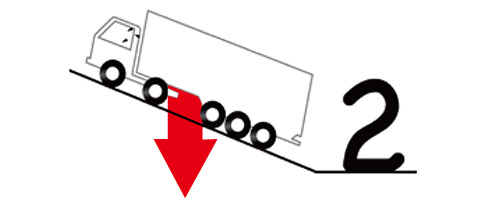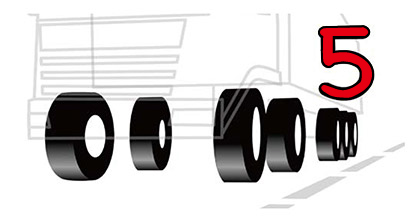
When a vehicle changes motion, it must overcome the inertia force which depends on the value of the vehicle acceleration and weight.

This is an inevitable natural force.

This is primarily related to the vehicle’s aerodynamics, such as streamlined body design.

This friction is inevitable and comes from the mechanical parts of the vehicle such as engine gear box, bearings, and brakes.

Most people tend to ignore the 5th driving resistance – tire rolling resistance. However, it is actually the 3rd largest resistance that affects fuel consumption. When a truck in good condition is traveling at a speed of 80 km/h on a paved road, under standard load and pressure, about 26% of its power is used to overcome the tires’ rolling resistance. Therefore, the effect of tire rolling resistance on fuel consumption cannot be ignored.

With each rotation of the wheel, the tire becomes deformed due to the load. Since both the rubber and internal air are flexible, the tire will be subject to repeated compression and expansion when rolling. All these processes need to consume a certain amount of energy. Part of which is converted into heat and increases the tire temperature. This loss of energy is known as tire rolling resistance.

Advanced formula, structure, and pattern design lowers rolling resistance.






FS: Indicates Fuel Saving Tire

 - Wisma Hayam Wuruk Lt. 10, Jl. Hayam Wuruk No. 8, Indonesia 10120. Tel: +62-21-50985916-20, Fax: +62-21-50985908
- Wisma Hayam Wuruk Lt. 10, Jl. Hayam Wuruk No. 8, Indonesia 10120. Tel: +62-21-50985916-20, Fax: +62-21-50985908
© Copyright 2017 Giti | Legal Terms | Privacy Policy | Site Map | Gajah Tunggal